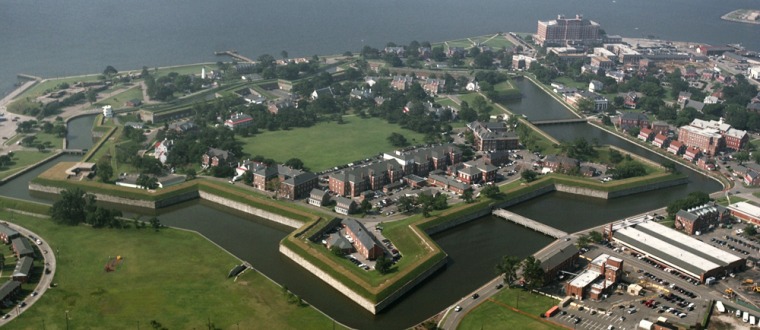A map of U.S. military bases is a chronicle of perils now gone, often long gone.
The forts protected British settlers in what was then the deep interior — central Pennsylvania. They helped fend off Indians along the Oregon Trail. They guarded against mortal danger and pesky smugglers from Canada, shipped troops across the ocean in two world wars and stared down Russians over the polar ice cap.
The lesson, as the government prepares a new round of base closings, is that the posts that have adapted have survived.
In other cases, they are where they are because someone did a good job of greasing government skids.
As the country’s military needs have changed over the years, many of the country’s 425 bases and several thousand smaller outposts have reinvented themselves and today fulfill far different roles.
Those that haven’t adjusted could find themselves on the new base-closing hit list.
On Friday, Defense Secretary Donald H. Rumsfeld is to submit his recommendations to the independent Base Realignment and Closure Commission, and that panel is required to submit its final report to President Bush by Sept. 8. About 20 percent of domestic base capacity has been cut in previous rounds starting in 1988.
War as catalyst
The Indian wars, the world wars and the Cold War are responsible for the largest constellations of military outposts, historians say.
Bases sprang up near airplane factories to supply the Soviet Union when it was a U.S. ally in World War II. Later, Northeast bases became home to long-range strategic bombers whose deadly, never-used payload had the Soviets as their intended target. Later still, with bombers able to refuel in midair and go farther, they moved into the greater safety of the heartland.
Some military property still in use dates back to the nation’s founding or earlier.
The military presence at Carlisle, Pa., dates to 1757, when British settlers needed protection from attacks by the French and Indians. President Washington later put down the “whiskey rebellion” there. Now, this small Pennsylvania post is the bucolic home to the Army’s Carlisle Barracks and the Army War College, but it is considered vulnerable in the coming round of cuts.
Fort Sill in Oklahoma was staked out in 1869 during a military campaign to stop hostile Indians from raiding border settlements in Texas and Kansas. Geronimo and other Apache prisoners of war lived there for a time.
SAC takes a page from Old West
Wright-Patterson Air Force Base got its start in the early 1900s as Wright Field outside Dayton, Ohio, where the Wright brothers did pioneering work on aviation out of their bicycle shop.
And the Strategic Air Command headquarters at Offutt Air Force Base in Nebraska takes its heritage — and still has the guard house — from old Fort Crook, which protected western expansion in the 1800s and began its aviation legacy in 1918 as base for the 61st Balloon Company.
Apart from lobbing missiles, plain old lobbying has brought some bases into being. In Washington state, the local Chamber of Commerce and other businesses did an end-run around a resistant Army official and won President Wilson’s endorsement to open Fort Lewis in 1917.
One installation with approximately nine lives over 400 years sits at the tip of the Virginia Peninsula in Chesapeake Bay.
Versatile Fort Monroe
Fort Monroe was built in the early 1800s on the site of various fortifications that dated back to 1609, when the British erected defenses to protect the approaches to the Jamestown colony. Fort Monroe, built of stone and with a grand moat that still exists, became the first and largest of a system of coastal defenses after the burning of Washington by the British during the War of 1812.
Later it became an artillery practice school, then a key Union redoubt in the Civil War, then headquarters for an array of coastal artillery guns that could fire projectiles 25 miles in World War II, then a training center that since 1973 has been headquarters of the Army’s Training and Doctrine Command.
Many such bases have found a new mission, even as others lose their purpose — or the political clout to keep them open — and melt back into the scrub grass.
‘Certain constants remain’
“The threat is different, the danger is different but other dangers continue and military installations can be readapted to meet current and future needs, as has been done over the decades and the centuries,” said Richard J. Sommers of the Army Military History Institute.
“What was once important in the 19th century may be less important in the 20th century, but certain constants remain,” he said.
Among those constants is the need for appropriate weather and lots of open space. China Lake in California, the high-desert base of the Naval Air Warfare Center Weapons Division, has offered those qualities in the five decades it’s been used to test airborne weapons systems.
In places like that, said Daniel Goure of the Lexington Institute, “land was cheap and you could get big chunks and people wouldn’t complain when you buzzed the cows.”
